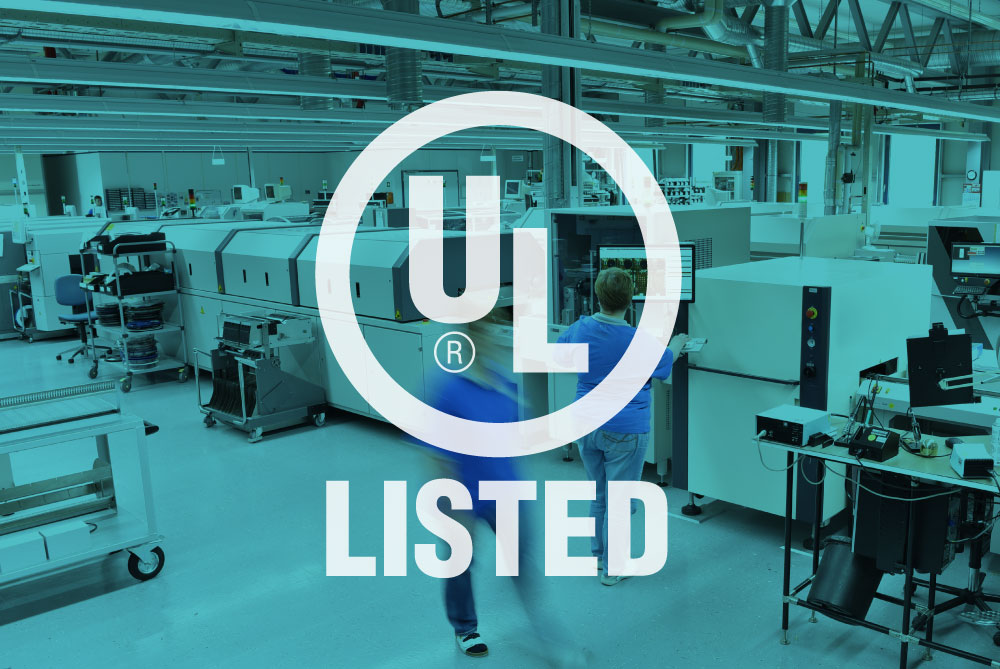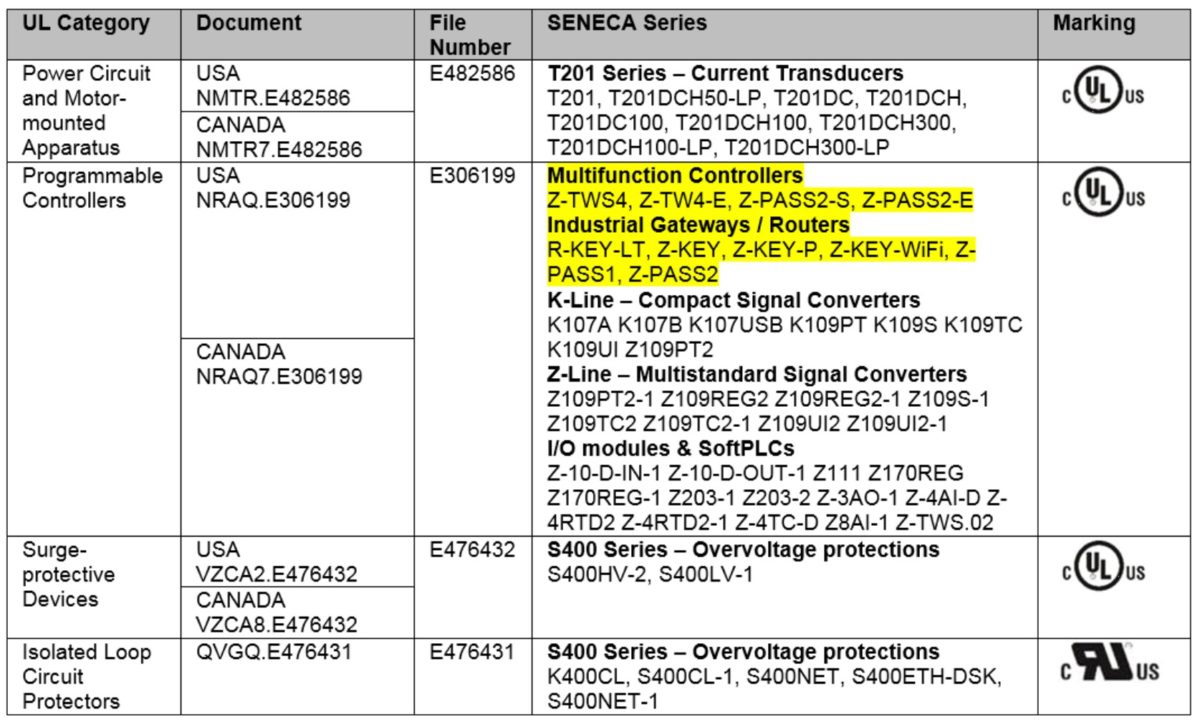 https://blog.seneca.it/wp-content/uploads/2021/06/UL-listed.jpg
https://blog.seneca.it/wp-content/uploads/2021/06/UL-listed.jpg
Underwriters Laboratories (UL) certification is one of the most important product approvals. It certifies that electrical and electronic items comply with essential safety standards or requirements. In particular, it can be applied to electrical and electronic products, IT and telecommunications equipment, medical and laboratory devices, industrial control components, motors, cables and wires, electrical panels, lighting equipment, food machinery, plastics, and household and commercial appliances.
For companies that deal with industrial automation and intend to export to the North American market, UL certification (and CSA certification) is a distinctive element for identifying reliable and safe products in countries where, unlike Europe, the certification we know as the CE declaration of conformity has no formal relevance. The equivalent Canadian body is CSA, which stands for Canadian Standards Association.
Competitiveness & Safety
The product certification process consists of a few simple fixed steps, the first of which is a general regulatory framework of the product to be certified. Unlike the European directives, the same product can fall under two different regulations, depending on its intended use. The second step requires a preliminary technical analysis to assess whether that product has been designed to meet the requirements. Finally, we come to the last step, the actual certification, to apply for which it is necessary to send a sample of that product to the competent body in order to start the verification tests and the compliance with Osha (Occupation, safety & health administration) and Ansi (American national standards institute) regulations. When the process is completed and the product is determined to be suitable, a certification is issued to the product manufacturer authorizing the use of the UL Mark. So, according to UL regulations, products that have received certification are identified as meeting the standards with respect to potential fire hazards, mechanical hazards and electrical shock.
The benefits of certification
The United States and Canada are countries that have developed a particular sensitivity to the potential risks of explosion or fire in a product: this explains the high level of attention paid to electrical panels and related wiring. There are now tens of thousands of companies that sell UL and CSA certified products. Having a UL-marked product saves time, as it protects you from, or at least limits, any complex inspections by the relevant authorities. In order to prepare for certification, it is necessary to prepare comprehensive technical documentation that includes a list of safety-critical components and materials, mechanical layouts, images and test reports. However, certification is not an essential document for entry into the country. For some product categories, it may not even be necessary. Generally speaking, however, UL approval is an important indication that a manufacturer has addressed the qualification aspect of its equipment for launch in the U.S. market.
UL Classified, UL Listed (Listing), UL Recognized: be aware of the differences
When talking about UL Classification, in most cases this means “UL Listed” or finished products or components to be installed in the field taking into account specific guidelines, such as ANSI/NFPA 70, National Electrical Code (NEC). However, there are also UL Recognized Component products, which are components of a system that are typically installed in a factory. In summary, we can distinguish the following UL Markings.

UL/CSA Classified for items tested for specific properties, hazard analysis, and fitness for use;
UL Listing Mark for representative product samples tested and evaluated in accordance with U.S. safety standards
UL/CSA Recognized for components that are part of a larger product or system.
UL-Eu is the European mark that, combined with the U.S. UL, certifies that the product meets the standards of the European and North American markets, with the added benefit of being issued by a single recognized body
Differences with CE marking.
There are fundamental differences between UL certification and CE Marking. CE Marking in Europe is mandatory and required by law, but has no value in the U.S. and is not recognized by OSHA. A CE-marked machine can be sold and used in the U.S., but it does not guarantee compliance with U.S. regulatory requirements. UL certification in the U.S. for machinery is not mandatory, but voluntary. CE Marking means that the product meets the requirements of applicable directives and regulations, but it does not refer to a specific standard. UL certification means that the product conforms to a particular standard, not directly to legal requirements. CE Marking in Europe is issued by the manufacturer without the intervention of a third party, as a self-certification. UL certification in the USA is issued by a third party. CE Marking in Europe according to Directive 2006/42/EC relates to the entire machine as a product placed on the market and/or put into service. UL certification may only relate to certain aspects or equipment of the machine, depending on the standard applied. When designing a machine for the USA, particular attention must be paid to the electrical equipment, as there are very specific requirements that differ from those in Europe. The two main standards to be used are:
- UL 508A Industrial Control Panels for the design of electrical panels
- NFPA 79 Electrical standard for Industrial Machinery for the design of on-board equipment.
SENECA UL certified products
Since 2011 SENECA, already certified UNI EN ISO 9001:2015 and particularly attentive to quality standards, has launched a campaign for UL certification of its products, confirming the technological and reputational commitment of the company to its customers. Recently, the certification issued by Underwriters Laboratories concerned the range of industrial and IIoT gateways (Z-KEY, Z-KEY-P, Z-KEY-WIFI, R-KEY-LT Z-PASS1, Z-PASS2) and multifunction controllers with IEC 61131-1 programming (Z-TWS4, Z-PASS2-S, Z-TWS4-E, Z-PASS2-S-E).
Passing stringent tests for potential fire hazards, electrical shocks and mechanical failures, the UL-rated products join dozens of other SENECA products that have already been UL-marked for several years: remote I/O modules for data acquisition and distributed automation, signal converters, current transducers, surge protectors.
The extension of the marking to the new products of industrial control and communication accompanies the will of SENECA to establish itself more and more in a global and competitive market, differentiating itself for the excellence of its production processes and for the quality of its products.
